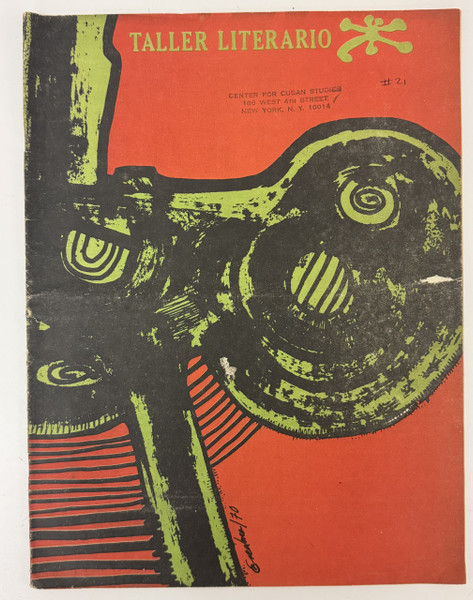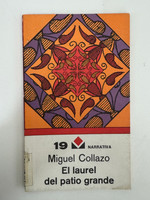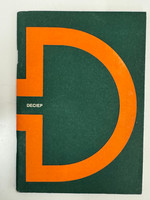- Travel
-
Exhibits
- La Portada Cubana
- Immortal Cuba: Artists Take on Their Heroes
- Seattle Poster Exhibit
- Sandra Dooley & Alejandrina Cué
- The Art of Wayacón
- Cuban Folk Art
- Cuba In Black And White
- 25 Years of Cuban Art Space
- Summer Folk Art Expo
- ¡SPRING AWAKENING FROM CUBA!
- Celebrating The Art Of Cuban Women
- Celebrating Paper, Affordable Art from Cuba
- Art of the Revolution
- Outsider Art
- Lost and Found
- En la lucha: Celebrating Cuban Women and Their Art
- Cuban Art Stash
- 100 Fires: 5 Cienfuegos Artists' Work on Paper
- Waya + Monte! Magic Realism in Cienfuegos
- Viva Cuba Viva! Poster Show
- Cultivando Sueños
- Black Lives Matter in Cuba Jan 9-March 27
- Leandro Soto: Crónicas visuales
- Cuban Canvas
-
Archive
- Global Reflection 2018: Spirit and Community
- Exhibit in the cloud: Contemporary Works on Paper
- MADE IN CUBA! MINNEAPOLIS EXHIBIT
- Cuban Posters and Photography from CCS collection
- AUTUMN SALE! Sept/Oct 2017
- SPRING ARTS AND CRAFT SALE
- Vuelo Directo/Non Stop: Alberto & Alejandro Lescay
- The Many Faces of Fidel
- Somos
- Made in Cuba!
- The US empire in Cuban graphics
- Made in Cuba/Seattle exhibit
- Entre Nos
- Looking Back
- Cuban Art Space
- Membership/Donate
- About Us
- Cuba News
-
Alfonso's dynamic cover design features bold abstract forms in vibrant lime green against an orange-red background, creating a powerful contrast that suggests both tropical vegetation and revolutionary energy. The graphic vocabulary employs thick organic shapes with striped patterns, spirals, and concentric circles that evoke both pre-Columbian iconography and 1960s psychedelic aesthetics. The Taller Literario logo—a stylized figure with outstretched arms—appears in the upper right corner in the same lime green, while Alfonso's signature appears in script at the bottom. This issue was distributed in the United States by the Center for Cuban Studies at 186 West 4th Street, New York, demonstrating the journal's circulation within solidarity networks.
Published by students of the Escuela de Letras (School of Letters) at the Universidad de Oriente in Santiago de Cuba, "Taller Literario" served as a vital platform for emerging Cuban writers and intellectuals during the revolutionary period. Issue #21, corresponding to Year VIII (eighth year of publication), appeared in May 1970 during the "Año de los Diez Millones" (Year of the Ten Million Tons)—Fidel Castro's ambitious but ultimately unsuccessful campaign to harvest ten million tons of sugar. The editorial work was coordinated by Magda Pérez Gallego and Hugo Vergara, with guidance from Guillermo Rodríguez Rivera, himself an important poet and cultural figure who would become one of Cuba's most respected literary voices.
The journal's content reflects the political intensity of the moment. The lead article, "La Trágica Muerte Boliviana" (The Tragic Bolivian Death) by Adela García Agut, examines Che Guevara's death using a striking high-contrast portrait. The piece engages with Carlos María Gutiérrez's controversial analysis published in Casa de las Américas magazine, exploring the voluntary nature of Che's sacrifice and its meaning for revolutionary movements. The article cites Che contemplating death as something natural and necessary, quoting his belief that revolutionaries must be willing to launch "the last sigh on whatever land" when destiny calls. This somber meditation on martyrdom and revolutionary sacrifice reflects how deeply Che's 1967 death in Bolivia continued to resonate in Cuban revolutionary culture three years later. The journal's publication information notes that all correspondence should be directed to "TALLER LITERARIO, Escuela de Letras, Universidad de Oriente, Santiago de Cuba," with each author responsible for their opinions. This issue was printed at the Universidad de Oriente's own print shops, embodying the decentralized cultural production that characterized Cuba's eastern provinces.
-
-
Discover More at the Center for Cuban Studies







